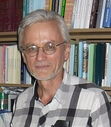Alexander J. Motyl's Blog, page 14
May 9, 2014
Remembering the Red Army and Rape
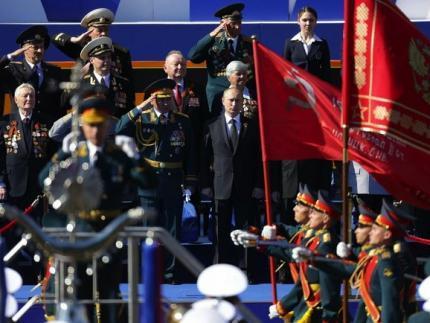
As May 9th, Victory Day, approaches and celebrations of the defeat of Nazi Germany take place throughout all the post-Soviet states, it may be worth remembering that many members of the Red Army traded in their heroism and self-sacrifice for criminality and rapine in the last days of the war.
Here’s Cooper Union historian Atina Grossmann:
It has been suggested that perhaps one out of every three of about one and a half million women in Berlin at the end of the war were raped—many but certainly not all during the notorious week of “mass rapes,” from April 24 to May 5, 1945, as the Soviets finally secured Berlin. The numbers cited for Berlin vary wildly; from 20,000 to 100,000, to almost one million, with the actual number of rapes higher because many women were attacked repeatedly. [Two German scholars] speak, perhaps conservatively, of about 110,000 women raped, many more than once, of whom up to 10,000 died in the aftermath. At the same time … they announce on the basis of Hochrechnungen (projections or estimations) that 1.9 million German women altogether were raped at the end of the war by Red Army soldiers. This may be a horrifically accurate estimate…
(“A Question of Silence: The Rape of German Women by Occupation Soldiers,” October, Spring 1995, pp. 42–63.)
According to Stanford University historian Norman Naimark:
It is highly unlikely that historians will ever know how many German women were raped by Soviet soldiers in the months before and years after the capitulation….. [R]ape became a part of the social history of the Soviet zone in ways unknown to the Western zones ... it is important to establish the fact that women in the Eastern zone—both refugees from further East and inhabitants of the towns, villages, and cities of the Soviet zone (including Berlin)—shared an experience for the most part unknown in the West, the ubiquitous threat as well as the reality of rape over a prolonged period of time.
(Ibid.)
Here’s Yale University historian Timothy Snyder:
[T]he outburst of violence against German women was extraordinary…. In some villages, every single female was raped, whatever her age…. Gang rapes were very common…. German women often committed suicide, or tried to kill themselves, to prevent rape or to evade the shame of having been raped. As one recalled her flight, “With the darkness came an indescribable fright. Many women and girls were right there and raped by the Russians.” Hearing their screams, she and her sister slit their wrists, but survived… They were spared during the night, probably because they had passed out and seemed to be dead. Indeed, death was one of the few defenses against rape. Martha Kurzmann and her sister were spared only because they were burying their mother. “Just as we had washed our dead mother and wished to dress her body, a Russian came and wanted to rape us.” He spat and turned away. That was the exception.
(Bloodlands: Europe Between Hitler and Europe. New York: Basic Books, 2010.)
And, finally, historian James Mark about the Red Army and Hungary:
During the Soviet occupation of Budapest at the end of the Second World War, it is estimated that around fifty thousand women in Budapest were raped by soldiers from the Red Army. After Berlin, the women of Budapest suffered in greater numbers than those of any other Central or Eastern European capital.
(“Remembering Rape: Divided Social Memory and the Red Army in Hungary 1944–1945,” Past & Present, August 2005, pp. 133–61.)
All of the USSR’s nations and nationalities—Russians, Ukrainians, Belarusians, Jews, Georgians, Armenians, Central Asians, and many others—were represented in the Soviet armed forces. Keep that in mind when you watch aged veterans taking part in Victory Day celebrations.
Now let’s ask a few exceedingly uncomfortable questions.
Were Red Army soldiers who fought bravely but also committed rapes heroes or villains? Should they be celebrated or condemned?
On the one hand, there’s no doubt that they made enormous sacrifices in World War II. Without them, Nazi Germany might not have been defeated. So in that sense they are clearly heroes.
On the other hand, who could possibly condone mass rape? So in that sense they are clearly villains.
Does it matter that their heroism lasted four years and their villainy two weeks? Do millions upon millions of war deaths negate thousands or hundreds of thousands or even 1 to 2 million rapes?
Should they be punished for their crimes? Should they be stripped of their medals? Or, at the least, reminded of their villainy?
Can any of these measures be undertaken without at the same time undermining the still-powerful Soviet-era myth of the “Great Fatherland War,” which served to legitimize the Soviet Union and which still legitimizes authoritarian rule in a host of post-Soviet states, especially Russia? Are the peoples of the former Soviet Union ready to come to grips with one of the most shameful moments of their history? Are their Western fellow travelers?
And just who should judge the “hero-criminals”? Surely not the likes of Vladimir Putin and Viktor Yanukovych. Russia? No way. Ukraine? Too divided. Civil society? Too abstract. Europe? Too indecisive. The West? Too compromised. Intellectuals? Give me a break. You and me? Hardly.
Let’s end with two questions with easy answers and one question with no easy answer.
Can heroes commit crimes? Of course. Can criminals be heroic? Why not?
Can we accommodate moral ambiguity, stop dividing the world into only two categories—saints and sinners, heroes and villains, victims and victimizers—and realize that there’s far more gray around than black and white? I wouldn’t bet on it.
Photo Credit www.kremlin.ru
OG Image: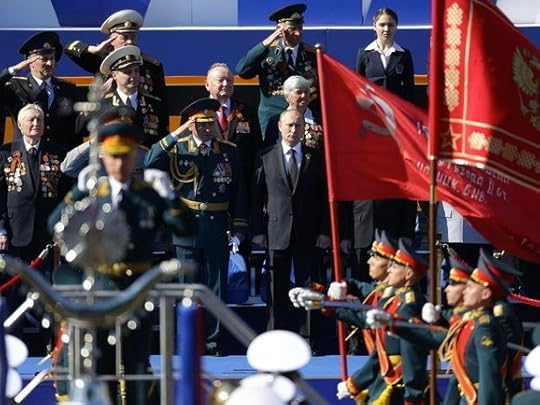 Europe and Central AsiaRussia
Europe and Central AsiaRussia
April 29, 2014
Putin’s Warlords vs. Ukraine’s Presidential Ballot
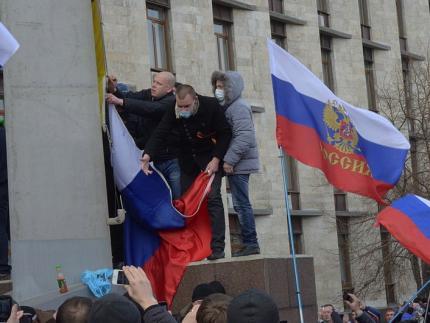
Vladimir Putin appears determined to disrupt the May 25th presidential elections in Ukraine.
The dictator and his warlords have already gone on a rampage in eastern Ukraine’s Putinstans: they control two cities, Sloviansk and Kramatorsk, and occupy administrative buildings in several others. Their efforts to destabilize Ukraine will continue, but Putin’s warlords will likely share the fate of terrorists the world over and fail to stifle the people’s voice.
In the absence of a full-scale war, the elections will take place, they will be fair and free, the international community will recognize them as such, and they will move Ukraine along the road to democracy. After all, Ukrainians want to vote and Kyiv wants them to vote. According to a recent poll conducted by the International Republican Institute, “Despite the fact that 64 percent of respondents believe Russia will try to disrupt or discredit the May 25 presidential election, an overwhelming 84 percent said they either will or are likely to vote. Although enthusiasm for the presidential election is highest in the west (91 percent) and center (92 percent), a majority in all regions say they either will or are likely to vote, 79 percent in the east and 62 percent in the south.”
As Russia tries to stop a genuinely democratic, internationally recognized, fair and free ballot, it risks what little reputation it has left. No one, anywhere, will be able to hang on to the illusion that Putin’s fascistoid regime is a constructive force—for peace, for democracy, or, indeed, for anything that normal, decent human beings could support. Even German business may have to agree that Putin’s Russia is a nasty piece of work.
Putin and his warlords must resort to terrorism precisely because they have so little support among the people they claim to be liberating from the “fascists” in Kyiv. According to the IRI poll:
Despite Russian propaganda and the claims of pro-Russia militants that Russian-speaking citizens need protection from Moscow, an overwhelming majority of respondents (85 percent) oppose Moscow sending troops to protect Russian-speaking citizens.
This overwhelming majority opposed to Russian intervention extends to every region (97 percent, west; 94 percent, center; 69 percent, east; 75 percent, south), to all age groups (18–29 year olds, 85 percent; 30–49 year olds, 85 percent; 50 and older, 85 percent), and to men and women (men, 84 percent; women, 86 percent). In addition, 68 percent of Russian-speaking citizens oppose military intervention by Moscow….
When asked if it was necessary for the Russian military to come into eastern and/or southern Ukraine to protect Russian speakers and ethnic Russians, an overwhelming majority (88 percent) said no. That majority was seen across all regions of the country, 98 percent in the west, 95 percent in the center, 73 percent in the east, and 86 percent in the south.
Lacking popular support in Ukraine, Putin’s warlords will do what terrorists do: seize buildings, promote anti-Semitism, imprison and kill opposition leaders, attack Roma and other minorities, take neutral observers and journalists hostage, and abuse the population of whichever cities or towns they terrorize. One especially brutal terrorist, the warlord of the Sloviansk Putinstan, Vyacheslav Ponomaryov, recently told a female journalist the following: “We’ll adopt all necessary measures to prevent elections in the southeast from taking place. We’ll take someone prisoner and hang him by his balls. Got it?” It was Ponomaryov’s terrorist pals who, under the leadership of the Russian intelligence officer Igor Strelkov, took hostage a group of OSCE military inspectors on April 25th.
Although Putin and his slippery foreign minister, Sergei Lavrov, will tell the world that the warlords have the support of the people, no one will believe them. Just as no one believes that al-Qaeda or the Taliban represent the people. Indeed, as Putin’s terror bands operate in Ukraine ahead of the elections, expect policymakers, journalists, and, most important, residents of the terrorized regions to reach the obvious conclusion: that Putin and his warlords are depriving the people of their voice, their livelihoods, and their lives.
Once that connection is made, watch eastern Ukrainian sentiment turn decisively against Putin. Ukrainians will be determined to vote precisely because Putin and his warlords want them not to vote. Watch Putin’s supporters in Russia scratch their heads and wonder why they voted for a loose cannon. Putin doesn’t know it yet, but his criminal decision to set up Putinstans could herald his own demise.
Is it possible that Putin’s terror will disrupt or shut down the elections? Why should it? Elections take place in extreme circumstances all the time. Look at Iraq and Afghanistan. Despite the best efforts of terrorists and warlords, Iraqis and Afghanis regularly go to the polls, thereby rebuffing warmongers and violence peddlers. Ukraine need only make sure its elections are fair and free—and with the good-faith effort of the democratic government in Kyiv and the technical assistance of the United States, the European Union, and the Organization for Security and Cooperation in Europe, the May 25th ballot will be fair and free and the people’s choice will be legitimate.
Putin will insist that the poll was illegitimate. But he’s been saying that all along, so why would anyone expect him to change his tune—especially after he’s been exposed as a sponsor of terrorism? Besides, who cares what he says? How many people heed the pronouncements of Kim Jong-un and Bashar al-Assad on human rights and democracy?
So why listen to a fascistoid dictator who supports terrorism and warlordism? Why listen to the Kremlin’s illegitimate ruler rant and rave about the illegitimacy of a democratic process?
Remember: It’s not a democratic ballot in Ukraine that Putin fears most. It’s a democratic ballot—period.
OG Image: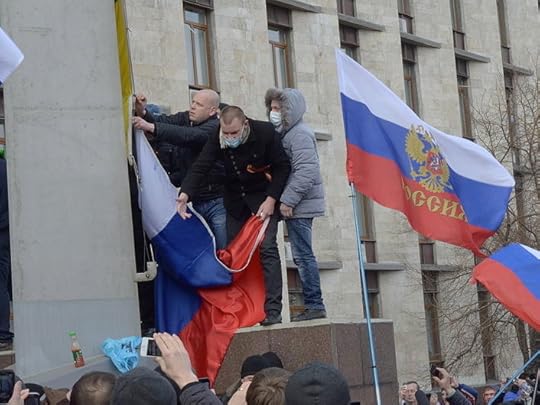 Europe and Central AsiaUkraine
Europe and Central AsiaUkraine
April 23, 2014
In Eastern Ukraine, Terror from Pro-Kremlin Outsiders
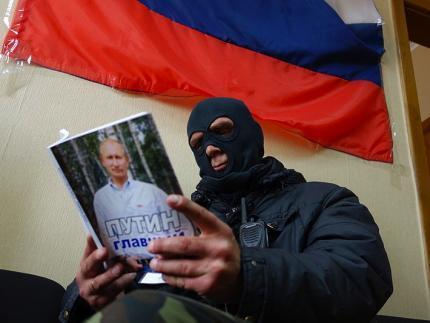
For three years now, I’ve been providing a small scholarship to a little girl in the city of Druzhkivka (population: 65,000) in eastern Ukraine’s Donetsk Province. Her mother, G, has sent me several brief on-the-ground reports of events in Druzhkivka. They convey better than any analysis just what average Ukrainians are experiencing as a result of Vladimir Putin’s promotion of terrorism in eastern Ukraine.
Bands of outsiders have been terrorizing the city since February 22nd, the day after the triumph of the democratic Euro Revolution in Kyiv and the collapse of the criminal regime of President Viktor Yanukovych. On Saturday, April 12th, armed pro-Russian terrorists seized the Druzhkivka district administration building. Since then, the city has been at the mercy of the pro-Kremlin extremists.
Note a few important points.
G emphasizes that the troublemakers are outsiders, and not residents of the city—a point that journalists and the Ukrainian authorities also make. It’s virtually certain that some of them are Russian intelligence agents and spetsnaz special forces.
She also states that Druzhkivka’s troublemakers, like those of many other provincial cities, enjoy the support of the local mayor. These officials, all members of the pro-Yanukovych Party of Regions, are clearly hoping to use the provocations as a means of holding on to power and escaping prosecution for corruption and other forms of wrongdoing during the years of the Yanukovych regime.
Finally, G underlines that the agents provocateurs are all invoking Vladimir Putin’s bogeyman, the long-deceased Ukrainian nationalist Stepan Bandera, who headed a Ukrainian national liberation movement, the Organization of Ukrainian Nationalists, in the 1930s–1950s. Significantly, as G notes, no one has ever encountered Bandera supporters in Druzhkivka. Their absence in the rest of Donetsk Province is just as striking. In a word, the terrorists are sowing fear of a non-existent foe in order to keep an uninformed population on edge.
*
February 23, 2014 (two days after Viktor Yanukovych’s flight from Kyiv):
Long live Ukraine, Alexander!
I’m happy for Kyiv, proud of western Ukraine, and ashamed of Donetsk Province. What’s taking place in our city today is simply horrible.
On February 22nd, at 12 noon, on the central square of the city, near the eternal flame, there collected several civilians and one person wearing a Don Cossack uniform. They were holding the flag of the Russian Federation. They also had the black and yellow flag of the Romanov dynasty.
They were asked who they were, what they were doing, what sort of flags they were carrying, and what their plans were.
The one on the Don Cossack uniform said that they were defenders of the homeland from the “Banderites.” They were, he said, all members of a Don Cossack organization that was registered in the city. Their general was the city mayor, Valery Hnatenko. They supported the introduction of Russian troops into Ukraine and the annexation of our state by Russia.
In the night of February 22nd–23rd, starting at 10 p.m., groups of 3–4 unknown persons trawled the city’s streets, throwing plastic bottles, causing a ruckus, and loudly shouting Long Live Ukraine and that Bandera has finally arrived. There were a few such brigades, and they were evidently drunk. It was clear that they were the little Cossacks headed by our mayor. Another 2,000 people gathered; they were disorganized, drunk, and very aggressive. Some people thought they were defending their town from western Ukrainian “gangs.” Many, mostly older people, came to honor the memory of those who had died [during the Euro Revolution in Kyiv]. They were attacked with eggs. The militia asked that they hide the Ukrainian flag, lest the aggressively inclined participants of the gathering be provoked.
February 23rd:
Apologies for the convoluted description… The people who supported the ideas of the Maidan no longer feel safe in their own land. What a horror.
March 2nd (two days after Russian troops occupied Crimea):
I don’t know if you have the opportunity to acquire reliable information about what is currently taking place in eastern Ukraine. As a simple person from the Donbas, I wish to inform everyone I know that unknown people have appeared in many cities of Donetsk Province. They are not residents of these cities, but enjoy the support of local mayors and their machines. They’re attempting to promote separatist ideas and to terrify the population with non-existent western [Ukrainian] extremists whom no one has ever seen.
April 14th (two days after terrorists seized the building of the Druzhkivka district administration):
Alexander, they will kill us…
*
I haven’t heard from G since that last note. Although I’m sure she and her family are safe, I still shudder at the thought of how terrified she must have been to have expected death—for nothing more than her identity as a Ukrainian in the unremittingly hostile environment created by Putin’s deliberate attempt to create havoc in her country.
OG Image: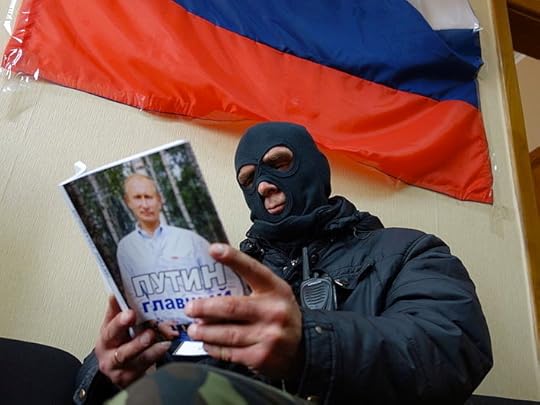 Europe and Central AsiaRussiaUkraineVladimir PutinViktor Yanukovych
Europe and Central AsiaRussiaUkraineVladimir PutinViktor Yanukovych
April 14, 2014
Putin’s Russia as a State Sponsor of Terrorism
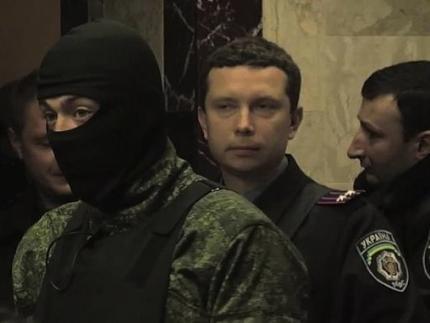
Putin’s Russia has become what the US Department of State calls a “state sponsor of terrorism.”
Here’s how: After the Anschluss of Crimea, Putin had three options. He could invade all or parts of Ukraine, or hope that pro-Russian demonstrators would flood Ukraine’s streets and assert their “people power.” The first option has not been pursued, perhaps because it’s too risky. The second failed, as the vast majority of Ukraine’s southeastern citizens have remained indifferent or opposed to unification with Russia.
That left Putin with one remaining option: terrorism.
Here’s why Putin’s Russia qualifies as a state sponsor of terrorism. According to Section 2656f(d) of Title 22 of the United States Code:
(1) the term “international terrorism” means terrorism involving citizens or the territory of more than one country;
(2) the term “terrorism” means premeditated, politically motivated violence perpetrated against non-combatant targets by subnational groups or clandestine agents; and
(3) the term “terrorist group” means any group practicing, or which has significant subgroups which practice, international terrorism.
There is overwhelming evidence of Russia’s direct and indirect involvement in the violence that rocked several eastern Ukrainian cities on April 12–13. Russian intelligence agents and spetsnaz special forces are directly involved; the weapons and uniforms worn by the terrorists are of Russian origin (a point made by the US ambassador to Kyiv, Geoffrey Pyatt); and the assaults on government buildings in Slavyansk, Mariupol, Makiivka, Kharkiv, Yenakievo, Druzhkivka, Horlivka, Krasny Lyman, and Kramatorsk were clearly coordinated by Russian intelligence. As EU High Representative Catherine Ashton delicately put it in a statement yesterday (pdf):
I am gravely concerned about the surge of actions undertaken by armed individuals and separatist groups in various cities of Eastern Ukraine…. I reiterate the EU's strong support for Ukraine’s unity, sovereignty and territorial integrity and call upon Russia to do so as well. To this end, the Russian Federation is urged to call back its troops from the Ukrainian border and to cease any further actions aimed at destabilizing Ukraine. (Emphasis added.)
Former NATO Supreme Allied Commander Europe Wesley Clark was more blunt, stating that the attacks were not spontaneous and represented the second stage of Russia’s plan to occupy Ukraine (the first being the occupation of Crimea).
Does the behavior of the pro-Russian forces in eastern Ukraine involve “premeditated, politically motivated violence perpetrated against non-combatant targets”? Obviously. Does this violence involve “citizens or the territory of more than one country”? Yes, it does. The violence therefore qualifies as international terrorism, and its perpetrators are obviously “terrorist groups.” QED.
By the way, the European Union’s far more detailed definition of “terrorist acts” should dispel any lingering doubts one may have had that the violence in eastern Ukraine qualifies as terrorist:
“Terrorist acts” mean intentional acts which, given their nature or context, may seriously damage a country or international organization and which are defined as an offence under national law. These include:
attacks upon a person's life which may cause death;
attacks upon the physical integrity of a person;
kidnapping or hostage taking;
causing extensive destruction to a Government or public facility, a transport system, an infrastructure facility;
seizure of aircraft, ships or other means of public or goods transport;
manufacture, possession, acquisition, transport, supply or use of weapons, explosives, or of nuclear, biological or chemical weapons,
participating in the activities of a terrorist group, including by supplying information or material resources, or by funding its activities in any way, with knowledge of the fact that such participation will contribute to the criminal activities of the group.In order for these acts to constitute terrorist acts, they must be carried out with the aim of seriously intimidating a population, or unduly compelling a Government or an international organization to perform or abstain from performing any act, or seriously destabilizing or destroying the fundamental political, constitutional, economic or social structures of a country or an international organization.
In light of Russia’s direct and indirect promotion of international terrorism in eastern Ukraine, Russia obviously qualifies as a “state sponsor of terrorism” and, after formally being declared as such, must be immediately subjected to the sanctions the United States is legally bound to impose on state sponsors of terrorism. (Naturally, the EU should follow suit.) Here’s the State Department:
Countries determined by the Secretary of State to have repeatedly provided support for acts of international terrorism are designated pursuant to three laws: section 6(j) of the Export Administration Act, section 40 of the Arms Export Control Act, and section 620A of the Foreign Assistance Act. Taken together, the four main categories of sanctions resulting from designation under these authorities include restrictions on U.S. foreign assistance; a ban on defense exports and sales; certain controls over exports of dual use items; and miscellaneous financial and other restrictions.
Designation under the above-referenced authorities also implicates other sanctions laws that penalize persons and countries engaging in certain trade with state sponsors. Currently there are four countries designated under these authorities: Cuba, Iran, Sudan and Syria.
That list should now consist of five rogue countries—unless, of course, both Washington and Brussels prefer to supplement their weak-kneed response to Putin’s violation of international norms with an implicit endorsement of terrorism.
OG Image: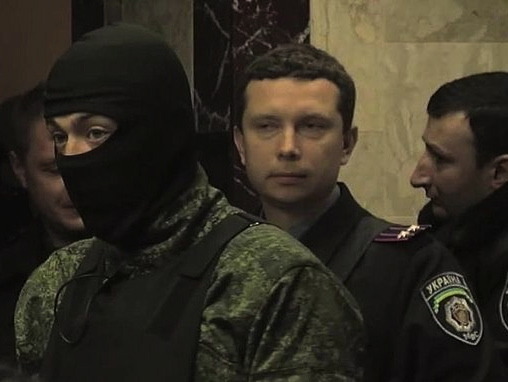 Europe and Central AsiaUkraineUSEU
Europe and Central AsiaUkraineUSEU
April 11, 2014
Trading Barbs with Putin
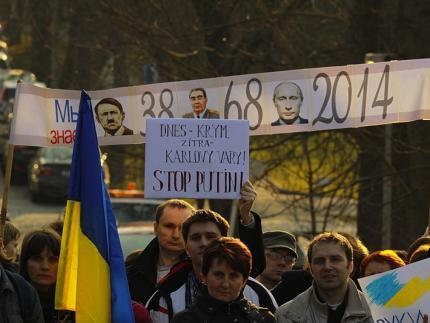
One of Ukraine’s richest oligarchs, Igor Kolomoisky, has just taken another rude poke at Russian President Vladimir Putin. And this time the Jewish Ukrainian businessman hasn’t just insulted Putin. By invoking Jewish support of Putin’s Ukrainian nationalist bogeyman—Stepan Bandera (1909–59)—Kolomoisky, who is president of the European Jewish Union and a leading Jewish philanthropist, has engaged in the ultimate provocation.
Kolomoisky, 51, was one of Ukraine’s first oligarchs to side with the post-Yanukovych democratic government. Just after Putin’s occupation of Crimea in early March, he agreed to serve as governor of his native Dnipropetrovsk province and publicly called Putin “a schizophrenic of short stature.” As if that weren’t enough, Kolomoisky then went on to say: “He is completely inadequate. He has completely lost his mind. His messianic drive to recreate the Russian empire of 1913 or the USSR of 1991 could plunge the world into catastrophe.”
A day later, Putin paid him back in kind:
For example, Mr. Kolomoisky was appointed Governor of Dnepropetrovsk. This is a unique crook. He even managed to cheat our oligarch Roman Abramovich two or three years ago. Scammed him, as our intellectuals like to say. They signed some deal, Abramovich transferred several billion dollars, while this guy never delivered and pocketed the money. When I asked him [Abramovich]: “Why did you do it?” he said: “I never thought this was possible.” I do not know, by the way, if he ever got his money back and if the deal was closed. But this really did happen a couple of years ago. And now this crook is appointed Governor of Dnepropetrovsk. No wonder the people are dissatisfied.
Kolomoisky’s latest assault on Putin wasn’t a statement, but a performance. He donned the T-shirt depicted here. The shirt abounds with semiotic meanings that need some unpacking.
For starters, black and red are the colors of the Ukrainian nationalist movement that derives its ideological inspiration from the radical branch of the Organization of Ukrainian Nationalists affiliated with Bandera. The OUN was established in 1929 as a national liberation movement committed to attaining Ukrainian independence. Until its demise in the mid-1950s, it fought the Polish, German, and Soviet authorities by means of propaganda, terrorism, and guerrilla activities. Ideologically and behaviorally, the OUN closely resembled the Algerian National Liberation Front, the Palestine Liberation Organization, and the Jewish Irgun or “Stern Gang,” while Bandera was the Ukrainian version of Ahmed Ben Bella, Yasir Arafat, Menachem Begin, or Avraham Stern. (For more on the OUN and Bandera, see here.)
Note as well that the image on the T-shirt represents a fusion of the Ukrainian national symbol, the trident, and a menorah.
The most semiotically charged part of the shirt is the term beneath the trident-menorah. If you read it in Russian, it’s zhidobandera—or “kike-Bandera.” If you read it in Ukrainian, it’s zhydobandera—or “Jew-Bandera.” Recall that, in the language of Soviet and Putin propaganda, “Bandera” is shorthand for “enemy of the Soviet Union,” “enemy of Russia,” “fascist,” and “anti-Semite.” According to this logic, enemies of the USSR/Russia must be fascists and anti-Semites. Hence, the T-shirt’s Russian reading boils down to a fusion of “kike” and “anti-Semite.” Its Ukrainian reading fuses “Jew” with “anti-Semite.” Both readings fuse “Jew” with “enemy.”
What, then, are the messages that the T-shirt, and Kolomoisky with it, are conveying?
First, and most obviously, Kolomoisky is claiming that ethnic Ukrainians and Jewish Ukrainians have a common cause in today’s Ukraine and that that cause—building a democratic Ukrainian nation and state (or what most Ukrainian nationalists would call nationalism)—is deserving of Jewish support.
Second, Kolomoisky is implicitly accusing Putin of being both anti-Semitic and anti-Ukrainian. The term zhidobandera reverberates with the interwar anti-Semitic notion of zhidokomuna, which fused Jews with Communism. By identifying himself, a Jewish Ukrainian, with a benign version of zhidobandera, Kolomoisky is by the same token identifying Putin and his apologists with the malignant version, which views Jews as “kikes” and Ukrainians as “anti-Semites” and “fascists.”
Third, in the manner of gays and African-Americans, who have appropriated such terms as “fag,” “queer,” and “nigger,” in order to drain them of their offensive content and turn them against homophobes and racists, so, too, Kolomoisky is appropriating the offensive Russian zhid and the pejorative term, Bandera, and stating that, in Ukraine, his homeland, both terms will have the meaning that ethnic Ukrainians and Jewish Ukrainians choose to ascribe to them. In effect, Kolomoisky is taking control of both the Russian and Ukrainian languages and insisting that, not Putin, not Russia, and not Russian propaganda, but he, together with his Ukrainian/Jewish countrymen and women, will decide what words mean in Ukraine.
Finally, Kolomoisky’s T-shirt is a plea for Jewish-Ukrainian understanding. Many of Ukraine’s Jews, who are generally Russian speakers, find the Ukrainian word for Jew, zhyd (which is identical to the Polish, Czech, and Slovak words for Jew), to be too close to the Russian pejorative, zhid, to be acceptable and therefore prefer yevrey. Many Ukrainians defend their choice of zhyd on the grounds that yevrey came to Ukrainian from Russian. In effect, the pragmatic Kolomoisky is telling both communities to cool it, take a deep breath, transcend their complex past, and work out a solution that addresses current concerns.
OG Image: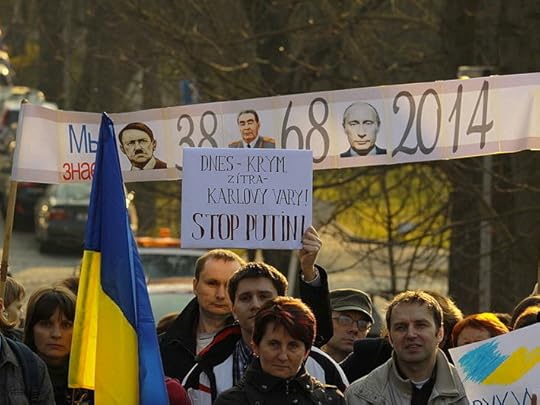 Europe and Central AsiaRussiaVladimir Putin
Europe and Central AsiaRussiaVladimir Putin
April 7, 2014
Could Russia Occupy Ukraine?
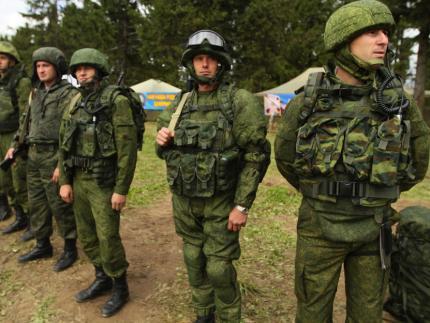
A Russian invasion of mainland Ukraine continues to worry Ukrainian and Western policymakers, despite statements by Russian President Vladimir Putin and Foreign Minister Sergei Lavrov that Moscow has no such intentions. The illegal occupation of Crimea serves as one source of disbelief in Russian sincerity; a second source is Moscow’s refusal to recognize the Ukrainian government or the forthcoming May 25th presidential elections. A third is the continued placement of Russian troops along Ukraine’s borders. Estimates of their number have ranged widely, from 30,000 to 220,000, with most falling in the 50,000–80,000 range. (On April 4th, however, Ukraine’s first vice prime minister stated there were 10,000–15,000 Russian troops along Ukraine’s borders and another 22,000 in Crimea.)
Ukrainian policymakers are right to assume that Putin’s intentions are not benign. That said, could Russia actually occupy Ukraine? How many troops would Russia need to hold Ukraine—especially under conditions of a Ukrainian insurgency?
A 2008 study (pdf) by US Army Major Glenn E. Kozelka provides some tentative answers. According to Kozelka:
To determine a historical gauge for planning force levels in a COIN [counterinsurgency] environment, this study provides a quantitative and qualitative analysis of two successful COIN case studies, the British-led Malaya Emergency and the US-led Operation in Iraq. Quantitative analysis of the case studies is used to compare the security force size employed to the population size…. Although each situation is unique and a fixed ratio will not guarantee success, there is a strong correlative relationship between force levels and success…. The case studies show that the closer force levels approach the ratio of 20 security forces per 1,000 population, the greater the possibility the COIN force will reach the tipping point to success.
Kozelka also cites a 1995 RAND Corporation study by James Quinlivan who “promulgates a continuum of force density levels, based on three levels of violence or threat intensity.”
Low violence (police operations): 1–4 security forces per 1,000 of population
Medium violence (civil unrest): 5–10 security forces per 1,000 of population
High violence (insurgency): 10+ security forces per 1,000 of population
Kozelka emphasizes that many local demographic, geographic, political, cultural, and economic factors can affect these numbers. They should therefore be viewed as general indicators, and not as precise measures.
I’ve combined Kozelka’s numbers with Quinlivan’s to produce a rough estimate of how many troops Russia would need to occupy Ukraine. Since the quality and counterinsurgency experience of Russian troops are probably much lower than those of British and American forces, I’ve used the high-range estimates: Quinlivan’s 4 per 1,000 in conditions of low violence, Quinlivan’s 10 per 1,000 in conditions of medium violence, and Kozelka’s 20 per 1,000 in conditions of high violence. I’ve also provided calculations for three clusters of Ukrainian provinces: low, medium, and high violence for Donetsk and Luhansk, which are most pro-Russian, but which also have significant pro-Ukrainian support and may therefore be unpredictable; medium and high violence for the other five southeastern provinces—Kharkiv, Kherson, Mykolaiv, Odessa, and Zaporizhzhia—where civil unrest or insurgency, or both, is likely. And only high-violence estimates for the remaining provinces, where insurgency would be greatest.
Province
Population
(2012 estimate)
Low violence
(police operations): 1–4 security forces per 1,000 of population: estimate for 4/1,000
Medium violence (civil unrest): 5–10 security forces per 1,000 of population: estimate for 10/1,000
High violence (insurgency): 10+ security forces per 1,000 of population: estimate for 20/1,000
Donetsk
4,403,178
17,612
44,031
88,062
Luhansk
2,272,676
9,090
22,726
45,452
TOTAL
26,702
66,757
133,514
Kharkiv
2,742,180
27,421
54,842
Kherson
1,083,367
10,833
21,666
Mykolaiv
1,178,223
11,782
23,564
Odessa
2,388,297
23,882
47,764
Zaporizhzhia
1,791,668
17,916
35,832
TOTAL
91,834
183,668
Cherkasy
1,277,303
25,546
Chernihiv
1,088,509
21,770
Chernivtsi
905,264
18,105
Dnipropetrovsk
3,320,299
66,405
Ivano-Frankivsk
1,380,128
27,602
Khmelnytsky
1,320,171
26,403
Kirovohrad
1,002,420
20,048
Kyiv (plus city)
4,533,816
90,676
Lutsk
1,038,598
20,771
Lviv
2,540,938
50,818
Poltava
1,477,195
29,543
Rivne
1,154,256
23,085
Sumy
1,152,333
23,046
Ternopil
1,080,431
21,608
Vinnytsia
1,634,187
32,683
Uzhhorod
1,250,759
25,015
Zhytomyr
1,273,199
25,463
TOTAL
548,587
The results are not encouraging for proponents of a Russian invasion.
In order to occupy Donetsk and Luhansk provinces alone, Russian would have to deploy somewhere between 26,702 and 133,514 troops.
A “land bridge” from Crimea to Transnistria would mean occupying Kherson, Mykolaiv, and Odessa provinces—which would entail somewhere between 46,497 and 92,994 soldiers.
Occupying all seven southeastern provinces would require between 118,536 (26,702 for Donetsk and Luhansk and 91,834 for the others) and 317,182 (133,514 for Donetsk and Luhansk and 183,668 for the others).
If Russia decides to conquer all of Ukraine, it would need an additional 548,587 troops—for a grand total of 667,123 to 865,769 troops.
Kyiv city and Kyiv Province alone would require 90,676 occupying soldiers.
In light of Russia’s estimated current force levels on Ukraine’s borders (50,000–80,000), the best Russia could do under low- and medium-violence assumptions would be to invade a few southeastern provinces. If those assumptions are changed to medium or high, only one or two provinces would be within its grasp. These conclusions assume that an invasion would entail no force deterioration as a result of the Ukrainian army’s resistance. Change that assumption, and Russia’s capacity to occupy southeastern Ukraine declines even more.
In sum, Kyiv is right to worry about an invasion of all or part of its southeast—but only if Russia makes optimistic assumptions about the extent of resistance. Accordingly, Ukraine’s immediate goal should be to strengthen its southeastern defenses—preferably with American help—so as to deter a focused attack or, at the very least, to make such an attack so costly as to raise the conditions of expected violence in individual provinces. (Ukraine’s medium-term priority should of course be to develop a full-scale defensive capacity.) But, unless Putin decides to deploy most of Russia’s armed forces (which number about 750,000) against Ukraine and thereby place all of Russia on a war footing, readying bomb shelters in Kyiv may not be a Ukrainian priority.
OG Image: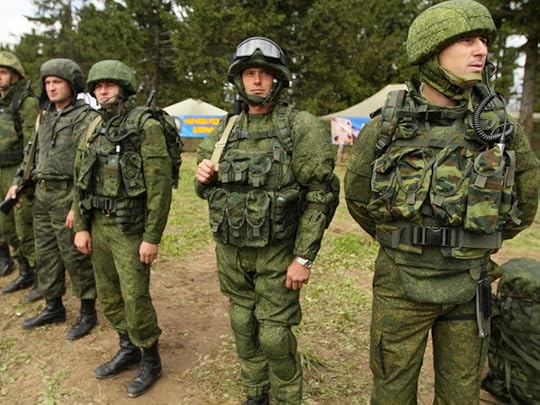 Europe and Central AsiaRussiaUkraine
Europe and Central AsiaRussiaUkraine
March 31, 2014
Experts on Ukraine Still Getting It Wrong
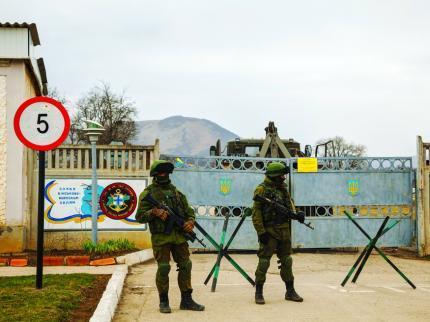
When the West’s leading experts get elementary facts about Ukraine wrong, blithely encourage Russian expansionism, or make illogical arguments, I worry. As should everybody. After all, these are presumably the people influencing or making policy in the United States and Europe.
The latest two examples are Jacques Attali, the founding president of the European Bank for Reconstruction and Development, and Ian Bremmer, president of the New York–based consultancy, Eurasia Group.
Attali’s views on Crimea, Ukraine, and Russia are alarming, indeed, irresponsibly so. Bremmer’s rest on definitional ambiguity and faulty logic.
Here’s Attali’s interpretation of what just transpired in Crimea: “a majority vote from a Russian-speaking province, part of Russia for centuries, attached in 1954 to another province of the Soviet Union on the whim of the secretary general of the Communist Party at the time, Nikita Khrushchev.”
No word of the Russian invasion, of the gangsters running Crimea, of the Crimean Tatars inhabiting the Crimea “for centuries” before Russia grabbed it in 1783, of the 1944 ethnic cleansing and genocide of the Tatars, of the bogus referendum conducted recently in the shadow of tanks, of the public opinion survey showing that only 41 percent of Crimeans supported unification with Russia, of the mass settlement in Crimea of Russian veterans after the expulsion of the Tatars. And the bit about Khrushchev’s whim is too precious. Doesn’t Attali know that the USSR was always run on the whims of its leaders?
Then there’s this:
Crimea and Russia chose to use the chaos born of the arrival in Kiev of a strongly anti-Russian government to reunite. Why does it bother us? Why should the Crimean population be denied the will to choose their destiny against the view of the country of which they are a member? After all, aren’t we preparing to allow the Scots to vote on exactly the same issue in Great Britain? Don’t the Catalans intend to do likewise in Spain? … And what will happen if Moldova, Belarus, or the Russian-speaking part of Kazakhstan ask to become attached to Russia? We will interfere? On what grounds? … What about Czechoslovakia splitting up into the Czech Republic and Slovakia?
Does Attali really believe that referenda in Scotland, Catalonia, and Quebec, and the break-up of Czechoslovakia, are in any way comparable—procedurally—to Russia’s military occupation of Crimea and the subsequent bogus referendum? Does he really believe that the government in Kyiv is “strongly anti-Russian”? Heaven help us all, if he does.
But Attali’s rhetorical questions—“And what will happen if Moldova, Belarus, or the Russian-speaking part of Kazakhstan ask to become attached to Russia? We will interfere?”—are nothing less than an invitation to Putin to invade these territories. By the way, what if Russian-speaking Nice, Berlin’s Charlottenburg, or the high-end parts of London ask “to become attached”?
Attali appears to be blithely unaware of the consequences of such land grabs. Ukrainians, Moldovans, Belarusians, and Kazakhs will resist. There will be war in much of Eurasia, along with tens of thousands of casualties and hundreds of thousands of refugees. And every country on Russia’s borders will promptly engage in a military buildup. “What do we have to fear from Crimea returning to Russia?” Attali asks. “That Russia calls the Russian-speaking part of the Baltic states part of Russia and thus a prime target for annexation? Come on! These countries are in the European Union and in NATO! Therefore, they have nothing to fear.” That “therefore” comes a bit too quickly to be reassuring. If Europe is willing to ignore a Russian attack on its neighbors and pursue Russia’s integration despite its aggressions, Estonians and Latvians would be fools to think Europe would sacrifice integration for the sake of two tiny countries.
Attali is dangerous; Bremmer is just wrong. His key premises are twofold: “Ukraine is far more important to Vladimir V. Putin than it is to America”; “Mr. Putin’s policy, including whether to seize more of Ukraine, will be informed overwhelmingly by national security interests, not near-term economics.”
Although he insists “the United States needs to see the Ukraine crisis from Russia’s viewpoint,” Bremmer doesn’t tell us what that viewpoint and what Russia’s national security interests vis-à-vis Ukraine are. Like every state, Russia is entitled to want a friendly government in Ukraine. Is it also entitled to invade Ukraine? That might be “Russia’s viewpoint,” but is Ukraine’s destruction a Russian national security interest or in any other way valid? How about committing genocide against the Crimean Tatars? Also a valid interest? See the problem. By leaving Russia’s national security interests undefined, while extolling its right to pursue them, Bremmer must, like Attali, justify any Russian policy—including war and genocide.
Bremmer also ignores the West’s national security interests. Surely it’s in the West’s interest not to have untrammeled imperialist expansion in Eurasia, to avoid a major land war on Europe’s eastern borders, and to maintain the post–World War II international order. Notice how Bremmer focuses only on the economic costs of sanctions:
… if Russia pushes farther into Ukraine, America’s attempt at tougher Iran-style sanctions, coordinated with allies, will ultimately fail. Indeed, if Mr. Putin pursues a broader military campaign, a similarly robust response from both America and Europe is unlikely. Russia’s energy exports, its commercial power and its sheer size make the costs of ignoring it prohibitively high for Europe.
But the West, like Russia, has both economic and national security interests (and some economic interests are also national security interests). Bremmer does logic a disservice by juxtaposing undefined Russian national security interests with narrowly defined Western economic interests.
Bremmer believes that “sharp rhetoric from the West could push Mr. Putin to be even more aggressive. That’s because he does not believe that the West would ever treat Russia like Iran and implement robust sanctions that would cut off vast areas of Russia’s economy from the West.”
Now, that just doesn’t make sense. If, as Bremmer argues, “Mr. Putin’s policy, including whether to seize more of Ukraine, will be informed overwhelmingly by national security interests,” then why should he buck the West? To annoy it? To demonstrate his toughness? But just what does that have to do with Russia’s national security interests—unless those encompass imperialism, war, and genocide? In which case, nothing can stop Putin and nothing can “push” him to “be even more aggressive.” He’ll just keep going until he’s stopped.
OG Image: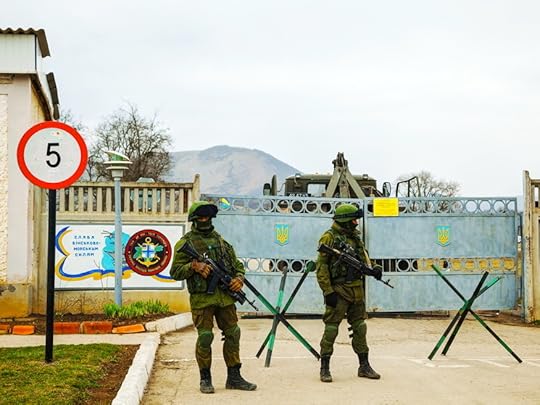 Europe and Central AsiaUkraineRussiaGermanyUnited StatesUS
Europe and Central AsiaUkraineRussiaGermanyUnited StatesUS
March 26, 2014
Is Putin Next?
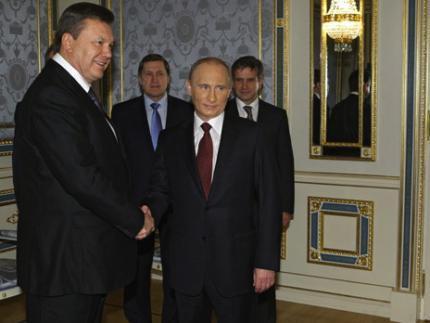
Here are a few trick questions. Who was elected democratically—Viktor Yanukovych or Vladimir Putin? Who violated his country’s Constitution? Who enjoyed popular legitimacy? Whose rule was unstable?
The answer to the first question—Who was elected democratically?—is obvious. That was Yanukovych, back on February 7, 2010, in elections that were roundly considered to be fair and free. Putin, in contrast, was elected democratically in 2000, semi-democratically in 2004, and non-democratically in 2012.
Here are excerpts from three Final Reports of the Election Observation Missions of the Organization for Security and Cooperation in Europe’s Office for Democratic Institutions and Human Rights (OSCE/ODIHR):
Russian election of March 26, 2000:
In general, and in spite of episodic events that sometimes tested the system’s capacity to uphold principles of fairness and a level playing field, the presidential election was conducted under a constitutional and legislative framework that is consistent with internationally recognized democratic standards, including those formulated in the OSCE Copenhagen Document of 1990.
Russian election of March 14, 2004:
While on a technical level the election was organized with professionalism, particularly on the part of the Central Election Commission (CEC), the process overall did not adequately reflect principles necessary for a healthy democratic election. The election process failed to meet important commitments concerning treatment of candidates by the State-controlled media on a non-discriminatory basis, equal opportunities for all candidates and secrecy of the ballot. Essential elements of the OSCE commitments for democratic elections, such as a vibrant political discourse and meaningful pluralism, were lacking.
Russian election of March 4, 2012:
Although all contestants were able to campaign unhindered, the conditions for the campaign were found to be skewed in favor of one candidate. While all candidates had access to media, one candidate, the then Prime Minister [Putin], was given clear advantage in the coverage. State resources were also mobilized in his support. On election day, observers assessed voting positively, overall; however, the process deteriorated during the count due to procedural irregularities….
There was … a general lack of confidence among many interlocutors in the independence of election officials at all levels, mostly due to their perceived affiliation with local administration and the governing party.
There was an evident mobilization of individuals and administrative resources in support of Mr. Putin’s campaign, which was observed by the OSCE/ODIHR. In several regions, participants in campaign events reported that they had been ordered to take part by their superiors. Various levels of public institutions instructed their subordinate structures to organize and facilitate Mr. Putin’s campaign events. Local authorities also used official communication, such as their institutional websites or newspapers, to facilitate Mr. Putin’s campaign.
Contrary to the legal requirements, the broadcast media did not provide balanced coverage of all candidates. Mr. Putin dominated the campaign in the media with frequent appearances. While newscasts on television channels monitored by the OSCE/ODIHR covered the daily activities of each contestant, they were outweighed by lengthy items about him, both as Prime Minister and as candidate, and by a series of documentaries praising his achievements. This created unequal conditions for the candidates, giving Mr. Putin a clear advantage….
[P]rocedural irregularities were observed. The process deteriorated clearly during the count, which was assessed negatively in nearly one-third of polling stations observed due to procedural irregularities.
Who violated his country’s Constitution? That’s easy: both Yanukovych and Putin, repeatedly and brazenly, in systematic efforts to dismantle democratic institutions, constrict civil liberties and human rights, and structure the rules of the game in their favor. Naturally, each violated his Constitution “constitutionally”—by manipulating legislative elections, creating legislative majorities, and then shamelessly using those majorities to rewrite the rules.
Who enjoyed legitimacy? Not Yanukovych—precisely because he was elected democratically and precisely because he promised to be a democrat and promote the people’s interests. When Yanukovych shifted gears almost immediately after becoming president and then proceeded to amass wealth, stifle democracy, and humiliate the people, his legitimacy plunged—thereby setting him up for the democratic Euro Revolution that led to his flight and abandonment of the presidency.
In contrast, Putin promised to restore Russia’s power and greatness, and he delivered, at least outwardly—by flexing his muscles in Transnistria, Chechnya, Georgia, and Crimea. Small wonder that the hyper-nationalist Russian masses have consistently supported and conferred legitimacy upon him. Yanukovych tripped up because he could not deliver on democratic legitimacy. Putin has succeeded because he delivered on neo-imperialist legitimacy.
Whose rule was, or is, unstable? Yanukovych’s, obviously: the sultanistic regime he built was hyper-centralized, inefficient, and corrupt. It survived only as long as the people acquiesced in its existence. Once the mass demonstrations of November 2013 turned into a popular revolution, the regime quickly dissolved and Yanukovych was left on his own, without the support of either the masses or the elites. His systematic violations of the Constitution and his illegitimacy automatically conferred legitimacy on the people power from which he fled.
But here’s a surprise perhaps: Putin’s rule is equally unstable. His regime is also hyper-centralized, inefficient, and corrupt. It—and Putin with it—can survive and enjoy neo-imperialist legitimacy only because it’s been the beneficiary of loads of free money derived from higher energy prices. Thanks to a vast increase in state wealth, Putin was able to buy popular legitimacy and still have enough to accommodate regime inefficiency and corruption. That’s about to change. Energy revenues are declining and will almost certainly continue to decline, as the West develops energy alternatives (shale gas, liquefied natural gas, and energy from other suppliers). With declining revenues, Putin will soon be exposed as a corrupt dictator unable to deliver neo-imperialism to the masses and embezzlement to the elites. Add to that the growing costs of his Crimean misadventure, and, sooner rather than later, Putin could become Russia’s Yanukovych.
Photo Credit: www.premier.gov.ru
OG Image: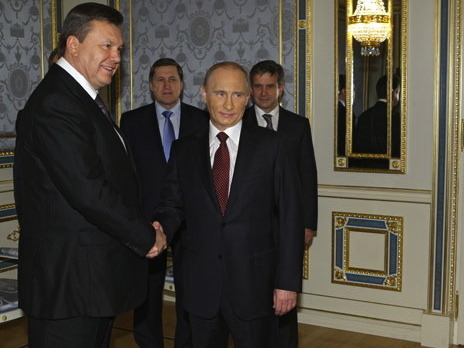 Europe and Central AsiaRussiaUkraineVladimir PutinViktor Yanukovych
Europe and Central AsiaRussiaUkraineVladimir PutinViktor Yanukovych
March 20, 2014
'Experts' on Ukraine
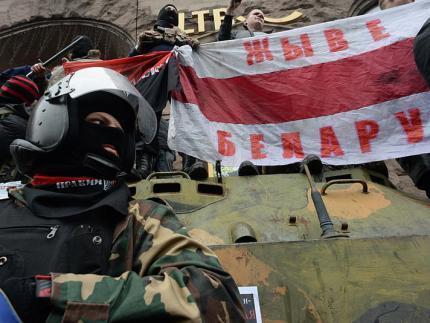
An astoundingly large amount of nonsense has been written about Ukraine ever since it came to occupy center stage in the public mind. That’s not surprising: most people in most countries barely knew the place existed or assumed it was “really” Russia. The number of Ukraine specialists outside of Ukraine is probably no greater than a few hundred in the entire world. Their expertise was of little interest to people who had no interest in or use for the country.
Now that Ukraine is in the news, it’s equally unsurprising that non-experts with an abysmal knowledge of Ukraine are claiming to be able to speak authoritatively about it. Media that feature such people are doing their consumers an enormous disservice. No one would ask a plumber to speak about nuclear weapons or a nuclear physicist about plumbing. And yet it doesn’t seem to occur to news outlets that Professor Stephen F. Cohen, a life-long specialist on Russia who has never written anything academic about Ukraine, might be unqualified to opine about Ukraine. Worse, it doesn’t trouble Cohen, who has spent a good part of his distinguished academic career insisting that evidence and expertise are indispensable to genuine knowledge. Nor does ignorance of Ukraine keep Henry Kissinger from producing a Washington Post op-ed that gets nearly everything wrong about the country.
Here’s a rule of thumb for media, policymakers, and consumers of news. Before you listen to, read, or watch self-styled experts discussing this topic, first find out whether they read Ukrainian, or at least Russian, and whether they’ve actually written anything serious about Ukraine.
The latest two examples of such blather come from two professors, David Hendrickson and Robert English. Like Kissinger, they are specialists in international relations; their views on Ukraine’s place in the world order might therefore be trustworthy. Naturally, neither evinces any deep knowledge of Ukraine’s history, politics, or culture.
Both scholars set off alarm bells discussing the presence in Ukraine’s government of several members of right-wing political organizations, Svoboda and the Right Sector. English even thinks that their presence is more dangerous than Vladimir Putin’s invasion of Ukraine’s southernmost province, Crimea. Both say these organizations are fascist.
One cannot help but wonder if either scholar has read any of the official Ukrainian-language statements or programs of either organization. For myself, I am fairly certain that neither has availed himself of the extensive academic literature on Ukrainian nationalism. Hendrickson cites one scholar, Per Rudling, whose views on Ukrainian nationalism are as extreme as Noam Chomsky’s on American foreign policy. There’s nothing wrong with reading Rudling (one suspects Hendrickson didn’t read too closely, though, as he misspells Rudling’s name twice), but, as any serious scholar and journalist knows, one should always familiarize oneself with a variety of perspectives.
Are Svoboda and the Right Sector fascist? Let’s compare them to a bona fide fascist regime. Vladimir Putin’s Russia is an authoritarian dictatorship that has a charismatic strong man as its undisputed leader, glorifies him in an unabashed personality cult, and employs hyper-nationalism and neo-imperialism as a source of legitimacy (more on that here). These features are found in equal measure in Hitler’s Germany and Mussolini’s Italy, and we justifiably call regimes with such defining characteristics fascist. Unsurprisingly, such regimes are usually violent and intolerant of various minorities.
Now let’s look at Svoboda and the Right Sector. Neither group supports authoritarian dictatorship or neo-imperialism. Svoboda aspires to the kind of “ethnocracy” found in Israel—a system of government that, while neither ethnically neutral (Israel is a Jewish state) nor as liberal as the ACLU might desire, is not undemocratic. The Right Sector professes to be more liberal than Svoboda and actually expresses a moderate form of nationalism, while Svoboda’s has significantly diminished during, and possibly as a result of, the Euro Revolution. Both groups, while on the Maidan in Kyiv, actively and easily cooperated with Russian speakers and ethnic minorities. (Ukraine’s Jewish leaders have not expressed alarm at their presence in the revolution or government.)
Svoboda has a charismatic leader, Oleh Tyahnybok, but his chances of winning a presidential election and becoming a strongman are virtually nil. The Right Sector’s leader, Dmytro Yarosh, lacks even Tyahnybok’s charisma and has zero chances of becoming president. Neither movement envelops the leader in a personality cult.
Both Svoboda and Right Sector are on the right. They are decidedly not liberals—and some of them may be fascists—but they are far more like the Tea Party or right-wing Republicans than like fascists or neo-Nazis. I for one wouldn’t want them to be setting the tone for Ukrainian policy. But neither would I want the Tea Party to be in charge of Washington. No less important, their role in the Kyiv government is at best tertiary (they would probably win no more than 5 percent of the vote in a national election), and policy is set not by them but by the broad coalition of unquestioned liberal democrats.
Should both groups be monitored? Of course. Might they evolve in a worrisome fashion? Possibly. But Hendrickson and English might be advised to direct most of their monitoring zeal at the activity of Putin and his fascist state. He invaded Ukraine. Neither Tyahnybok nor Yarosh has invaded Russia. Putin may start a land war with Ukraine. Both Tyahnybok and Yarosh will at most defend their country.
Who’s the greater threat to Ukraine? Right-wing organizations such as Svoboda and Right Sector, who have a few hundred “fighters” at their disposal, or a full-fledged fascist such as Putin, who has 750,000 soldiers at his? You don’t have to be an international relations expert to answer that question.
OG Image: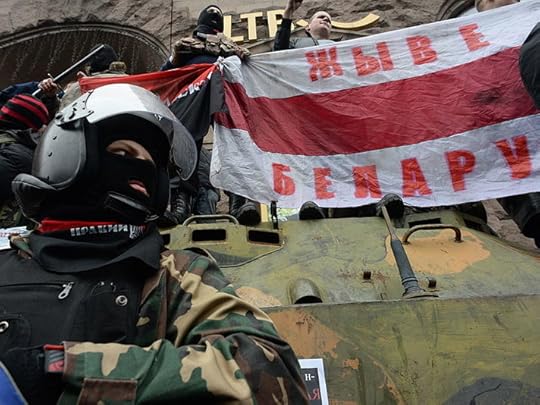
March 14, 2014
Putin’s Terrifying Warmongering
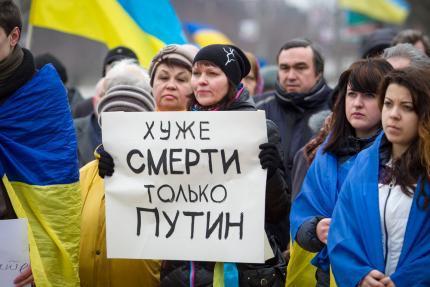
On March 8th, some 15,000 women and children lined the roads of Crimea, and Kherson Province to its north, in protest against Russian President Valdimir Putin’s invasion of Ukraine. The Crimean Tatar and Ukrainian women didn’t come out in force just because it happened to be International Women’s Day. They were also responding to Putin’s threat to implicate them and their children in further acts of war against Ukraine.
Putin had put the women—and the world—on alert at his March 4th press conference, where he declared that he was “not worried” by the prospect of war with Ukraine and that, were he to decide to attack, he intended to use women and children as a shield for Russian troops.
QUESTION: […] Are you concerned that a war could break out?
VLADIMIR PUTIN: I am not concerned, because we do not plan and we will not fight with the Ukrainian people.
QUESTION: But there are Ukrainian troops, there is the Ukrainian army.
VLADIMIR PUTIN: Listen carefully. I want you to understand me clearly: if we make that decision, it will only be to protect Ukrainian citizens. And let’s see those troops try to shoot their own people, with us behind them—not in the front, but behind. Let them just try to shoot at women and children! I would like to see those who would give that order in Ukraine.
The translation of the first question doesn’t do justice to Putin’s alarming views. Here’s a more literal translation that retains the structure of the original Russian:
QUESTION: […] That war could begin, that does not worry you?
V. PUTIN: That [i.e., that war could begin] does not worry me, because we do not intend and will not fight with the Ukrainian people.
Putin did not say, as the official translation suggests, that he is “not concerned” by war. The word “concern” connotes a general indifference. Instead, he used the Russian word “besspokoit,” which is more accurately translated as “worried” or “perturbed.” When the journalist asked, “that doesn’t worry you?” the “that” in her question referred to the clause “that war could begin.” Putin, in his response, therefore said “[that war could begin] does not worry me.”
The qualifier that immediately follows that statement only made things worse: “because we do not plan and we will not fight with the Ukrainian people.”
As Putin knows, wars are not fought between an army on the one hand and a civilian population on the other. Wars are fought between armies. Whether or not Putin plans to “fight with the Ukrainian people” is therefore completely irrelevant to whether or not he plans to launch a war against Ukraine and its armed forces. The journalist caught him in that contradiction and promptly said: “But there are Ukrainian troops, there is the Ukrainian army.”
At that point, Putin made things still worse. Watch the video clip. He bears down on the journalist, raises the forefinger of his right hand, and proceeds to lecture her.
For starters, he says, “If we make that decision, it will only be to protect Ukrainian citizens.” Recall that Putin explained his aggression in Crimea on the grounds that “Russian citizens” needed protection. The logic of that claim would have justified a Russian attack on Estonia, Latvia, Belarus, Moldova, and Kazakhstan, all of which have large Russian populations. The logic of the claim that he might start a war with Ukraine to “protect Ukrainian citizens” goes much further: it justifies a Russian invasion of any country. Poland, Hungary, Romania, Mongolia, and China should take note.
And then, when it seems barely possible for Putin’s warmongering to get any more terrifying, it does. As he explicitly states, he intends to “protect Ukrainian citizens” by positioning the Russian army behind them—not in front of them, as a genuine desire to protect people from an assault would appear to dictate. In effect, Ukrainian “women and children” would serve as a shield in any armed conflict that he chooses to initiate. Putin dares the Ukrainian side to fire first, but conveniently ignores that “women and children” would agree to serve as a shield for his troops only if coerced to do so by those very same troops. In other words, Russian troops would in fact not “protect Ukrainian citizens,” but cow them into submission and then force “women and children” to protect Russian soldiers. Whether he means this literally or figuratively, I leave to your imagination, but he is clearly blackmailing Ukraine with a thinly veiled threat that resistance will mean that "women and children" will die.
I cannot think of a single world leader—other than Adolf Hitler—who would have so explicitly, so callously, and so casually declared his indifference to mass human suffering. Especially worrying is that Putin made these statements at a press conference. He was, in other words, not just speaking to Russians or Ukrainians. He was placing the international community in general and the West in particular on notice: If he chooses to start a war, large numbers of civilians will die. They may be Ukrainian, but they may also be anybody he resolves to “protect.”
Unsurprisingly, Ukrainians are terrified by Putin’s warmongering. A friend in Lviv, which is as far as one can be from Ukraine’s eastern border (or is it front?) with Russia, tells me that “people are petrified and believe war is inevitable.” So are Crimean Tatars, whose ancestral land has already been occupied by Putin’s troops and who remember Stalin’s genocidal policies in 1944, when the entire Tatar population was deported to Central Asia and half died. What if Crimean Tatars, who have already begun forming self-defense units (and some of whom have begun talking of an anti-Russian jihad), take to the streets after Putin wrests Crimea from Ukraine? How will Putin respond? His warmongering statements suggest that mass internments of Crimean Tatars in concentration camps, ethnic cleansing, and even genocide are no longer inconceivable.
OG Image: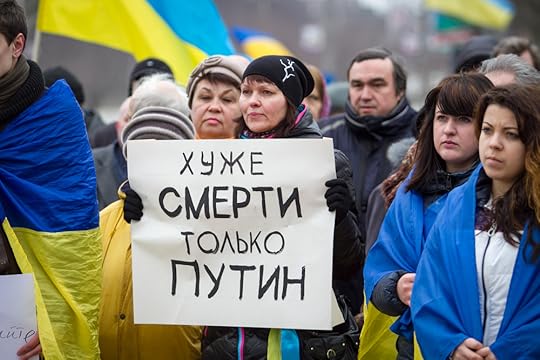
Alexander J. Motyl's Blog
- Alexander J. Motyl's profile
- 21 followers


